When you are crafting a blue jean, one element has to be decided on before all others. Before fit, before construction, a denim must be chosen.
For Tony Patella and Pete Searson of Tellason, their own thoughts, details and specifics are what make the jeans special. Consistency is at the heart of the product range. The right denim is essential to this. So alongside Cone Mills White Oak plant they created their very own.
“We just love the consistency of the three fabrics we’ve designed. Whatever we are cutting, sewing and selling now. Two, three or five years from now it will be the same thing”
High Production Minimums: A Barrier for Small Scale Manufacturers
Nowadays, there are a lot of companies out there making good quality, American made jeans. Many of them are made from great denim from famous names like Cone Mills in the US or the Kurabo Mill over in Japan.
If you are a smaller scale enterprise, however, your choice of denim is limited in terms of what you can get your hands on.
The minimums (the minimum yardage on what must be ordered) makes it impossible, financially and logistically, for the smaller denim manufacturers to have a denim unique to their product.
Small scale manufacturers must make do with what is available – perhaps an in-line fabric, seconds, or maybe even deadstock.
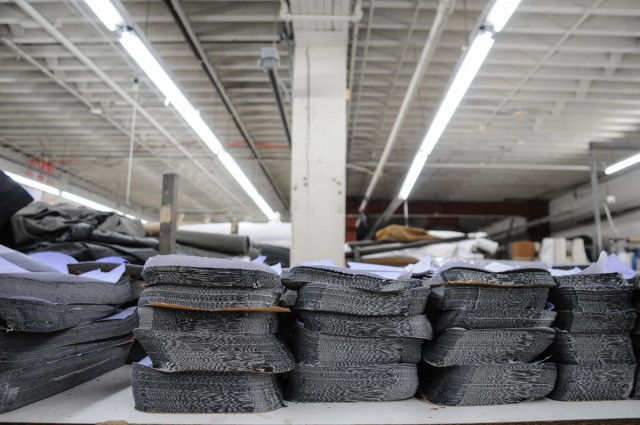
The Issues of In-Line, Second and Deadstock Denims
The problem then lies with the consistency or the uniqueness of your product.
Once the fabric you’ve come across is used up, in your next run you basically give your customer another product. If it is an in-line fabric, others can offer just the same thing you do.
For Tellason, their own thoughts, details, and specifics are what make the jeans special and consistency is at the heart of product range.
“If a customer loves our jeans but wears them out in a couple of years, he can go back into the shop and get that exact jean he remembers buying years prior. ”
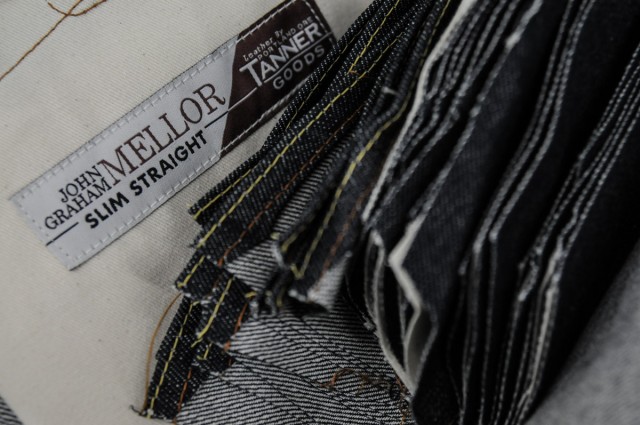
Tellason’s Three Unique Denims
To cater to their customers Tellason offer three denims unique to their brand.
“The three fabrics and the three weights were designed with a specific customer in mind.”
A 12.5 oz. denim is the lightest that they offer, followed by a 14.75 oz., and finally their heaviest a 16.5 oz. denim.
Each fabric utilizes the specific characteristics that the differing weights bring and helps to cater for as wide a customer base as possible:
“Some guys don’t like their belts and car seats turning blue. So our 12.5 oz was designed with more sulphur than indigo in the dye. It won’t bleed out and retains the colour for a lot longer.”
With their 14.75 oz. denim Tony and Pete pushed the envelope with Cone. It has the highest concentration of indigo the mill has ever done, which means it will age beautifully. With the 16.5 oz, the indigo concentration is a little lower, but there’s more starch and wax in the finish. It has a much stiffer hand than you would expect from a fabric at this weight.
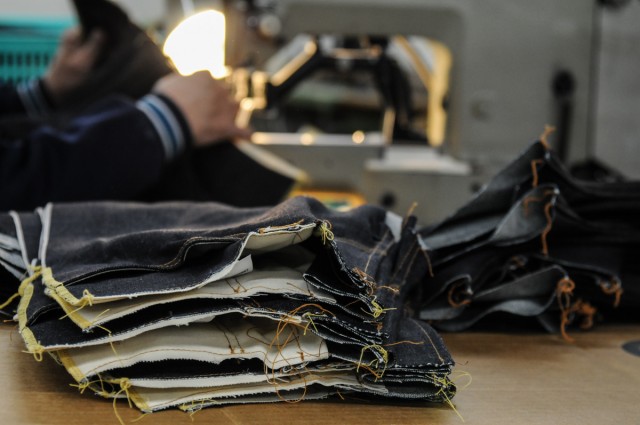
How Tellason’s Customers Influence New Developments
When the time comes to design a new fabric, Tellasons philosophy is simple: listen to their customers. For their latest denim for instance, the 16.5 oz, they consulted the guys from Burg&Schild.
The folks from Burg&Schild have been in the business for a long time and have been decking out people in denim from all walks of life. They sat down and just let them talk.
“Having that meeting and having that love for Burg&Schild in Berlin certainly helped facilitate and expedite the process. We sat down with no expectations and let them talk.”
They took these concepts to Cone Mills and six months later there was a fabric designed specifically to these requirements.
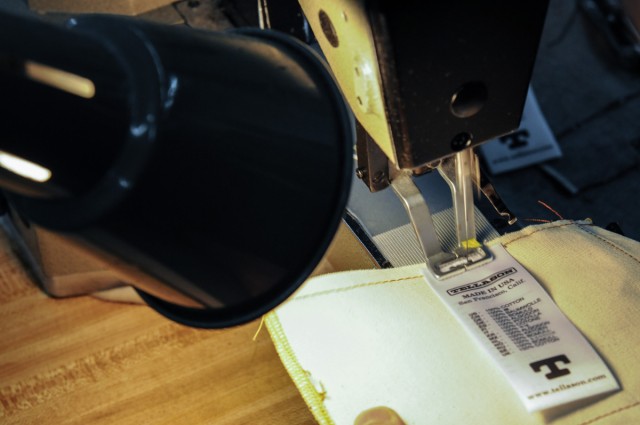
American vs. Japanese Denim: Why Tellason Chose Cone Mills
In today’s denim scene it may seem prudent to cover your bases in terms of where you source your denim. One or two fabrics from the US and another offering from Japan. However Tellason are wedded to Cone Mills, they are dedicated to preserving and supporting the history of denim.
In this vast history there are two iconic locations that the guys at Tellason revere over all others. The first being the Levi’s factory on Valencia Street in San Francisco, tragically closed in 2002. The second is the very place they get their own denim, Cone Mills White Oak plant.
“It’s one thing to sit here and talk about it, to blog about how great it is, what an iconic thing it is and so on. But if people don’t buy fabric from there it doesn’t exist. There is zero chance that we’d step away from the three fabrics we have designed with Cone.”
Supporting White Oak in this way, Tellason are rewarded with incredible fabrics that are held up to the strictest standards for consistency and quality.
“Cone is this huge company that have the history of developing fabrics going back over 100 years. They test and retest them making sure they are right before they go into production, whether it is 10,000 yards or 200,000 yards the process is the same. Companies like Levi’s are to thank for that, ordering yardage in the millions. You can’t fuck that up.”
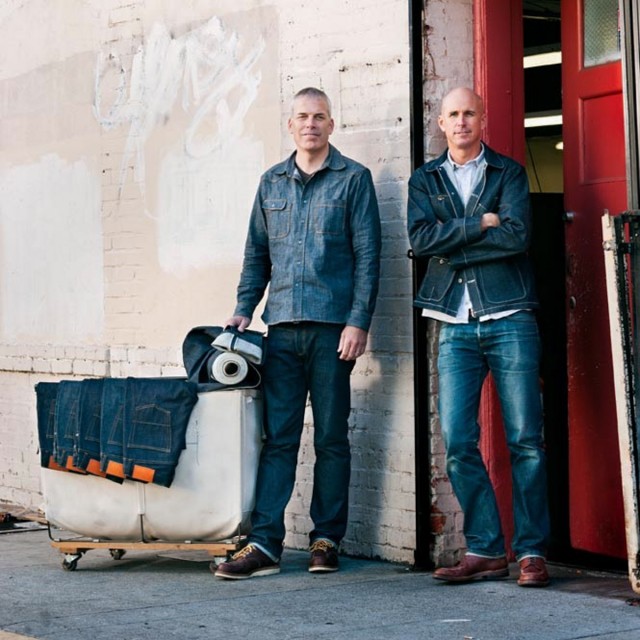
When you buy any good quality pair of raw selvedge jeans you are connected to an iconic past. In buying a pair of Tellason jeans you both help to support and augment that past.
My conversation with Tony and Pete added a great deal of depth to a product I had already admired for a long time. Buying a pair of Tellason jeans you are the final part of a value chain that reaches back in time.
I would like to sincerely thank Tony and Pete for taking the time to have a chat with us. If you are in the area you can call round to Burg&Schild and see the very jeans mentioned above. If you are a little further afield, head over to the Tellason website to get the lowdown on their entire collection.


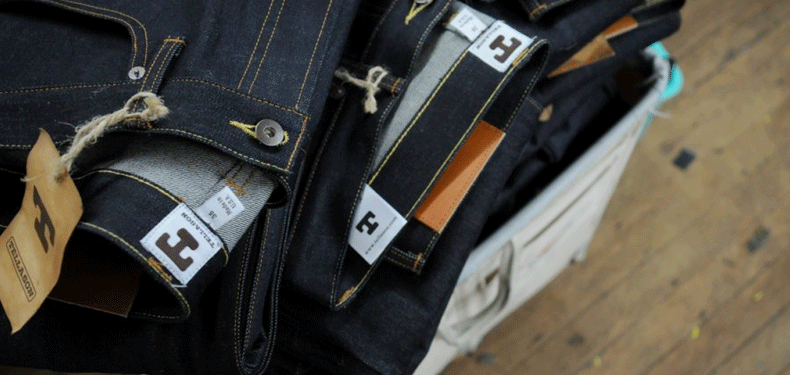
3 comments
I love what they´re doing. I´m wearing a 17oz John G.Mellor from them for 8 months now. Quality is so good and their fit works nicley for me! Hope they never stop making denim!
Do you have any pictures of that eric? 🙂
Your article gave me a lot of inspiration, I hope you can explain your point of view in more detail, because I have some doubts, thank you.